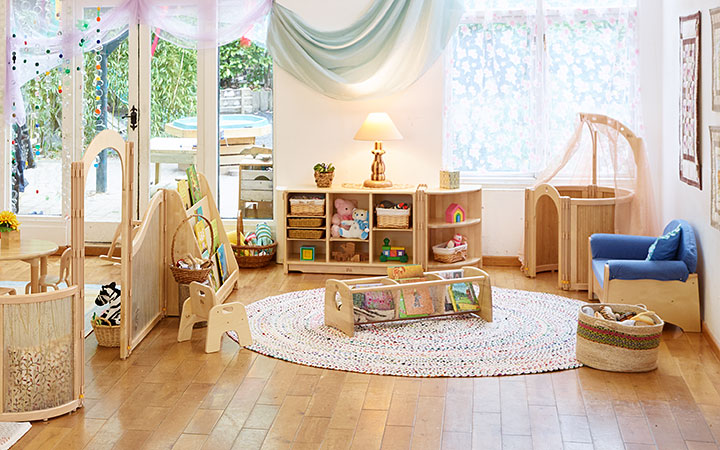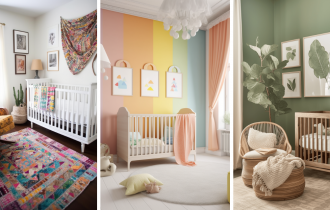Creating a Safe and Stimulating Play Area in Your Kid’s Bedroom

Designing a safe and stimulating play area in your child’s bedroom is essential for their growth, development, and imagination. It’s a space where they can explore, learn, and have fun while feeling secure. By incorporating the right elements, such as age-appropriate toys, interactive technology, and safety measures, you can create a play area that sparks their creativity and provides endless entertainment. In this article, we will explore practical tips and techniques to build a safe and stimulating play area in your kid’s bedroom, incorporating real-life examples and drawing inspiration from notable figures. Let’s get started and create a play haven your child will adore.
I. Safe Surroundings: Ensuring a Secure Environment
1.1. Childproofing Measures: Start by childproofing the play area to eliminate potential hazards. Install outlet covers, secure heavy furniture to the wall, and use safety gates to restrict access to certain areas. Conduct regular safety checks to ensure a safe and protected space.
1.2. Soft Flooring: Opt for a soft flooring option, such as foam mats or carpeting, to provide a cushioned surface for playtime. This helps reduce the risk of injuries from falls and offers a comfortable space for your child to crawl, roll, and play.
1.3. Accessible Storage: Incorporate storage solutions with accessible compartments to keep toys organized and minimize the risk of tripping or falling. Use labeled bins, shelves, or hanging organizers to create a tidy and safe environment.
II. Age-Appropriate Toys: Encouraging Development and Exploration
2.1. Open-Ended Toys: Choose open-ended toys that promote creativity, problem-solving, and imaginative play. Blocks, LEGO sets, building materials, and pretend play items like dolls or action figures allow children to explore different scenarios and develop critical thinking skills.
2.2. Educational Games and Puzzles: Include educational games and puzzles that engage your child’s mind and foster cognitive development. From alphabet puzzles to memory games, these activities promote learning while having fun.
2.3. Art Supplies: Provide a designated art corner with child-safe art supplies like crayons, washable markers, and non-toxic paints. Encouraging artistic expression helps develop fine motor skills, creativity, and self-expression.
III. Interactive Technology: Balancing Screen Time and Play
3.1. Educational Apps and Programs: Introduce educational apps and programs that offer interactive learning experiences. Platforms like ABCmouse, Khan Academy Kids, or PBS Kids provide engaging content that promotes literacy, numeracy, and critical thinking skills.
3.2. Augmented Reality (AR) and Virtual Reality (VR): Incorporate AR and VR experiences that transport your child to different worlds and enhance their imagination. Whether exploring space, diving into the depths of the ocean, or visiting historical landmarks, these technologies provide immersive and educational adventures.
3.3. Child-Friendly Smart Devices: Consider child-friendly smart devices that offer age-appropriate content and parental controls. Devices like Amazon Echo Dot Kids Edition or Google Nest Hub for Kids provide access to kid-friendly games, music, and educational content while allowing parents to manage screen time limits.
IV. Real-Life Play Area Examples: Drawing Inspiration
4.1. The Nature-Inspired Oasis: One real-life example featured a play area with a nature-inspired theme. It included a mini indoor garden, a small wooden playhouse, and natural elements like tree stump seats. This play area brought the outdoors inside, fostering a sense of wonder and exploration.
4.2. The Adventure Zone: Another example showcased an adventure-themed play area with a climbing wall, a mini rock climbing structure, and a play tent resembling a camping site. This imaginative space encouraged physical activity, problem-solving, and imaginative play.
4.3. The Science Lab: A science-themed play area featured interactive experiments, a mini microscope, and science-themed books and posters. This setup promoted curiosity, scientific exploration, and a love for STEM subjects.
Conclusion
Creating a safe and stimulating play area in your child’s bedroom is an investment in their development and happiness. As the American educator Fred Rogers once said, “Play is often talked about as if it were a relief from serious learning. But for children, play is serious learning.” By ensuring a secure environment, providing age-appropriate toys, incorporating interactive technology, and drawing inspiration from real-life examples, you can design a play area that stimulates your child’s imagination, fosters their growth, and brings joy to their everyday life. Create a play haven where their dreams can soar, and watch as they thrive in their own imaginative world.

